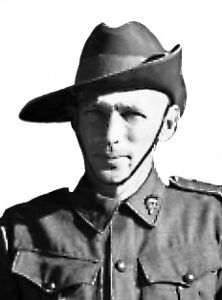
The following story was submitted to and printed in ‘The Australian’ Newspaper – ‘Looking back on 1942’ Stories from former military personnel, WW2 (unfortunately the date of print is not known.)
WX3453 CAPTAIN A. SMITH RYANS’ STORY
As Singapore fell Capt. A. Smith Ryan of the 2/4th Machine Gun Battalion was one of many soldiers rounded up by the Japanese to face a firing squad.
On 19 Februray 1942 the soldiers stood in front of the Japanese awaiting their fate. The captain leaned forward to whisper to a fellow soldier: “This doesn’t look too good.”
And just as he straightened up, the order was given to shoot. The bullet struck him under the left shoulder blade and as the party fired more bullets into the bodies, he lay still and the Japanese left him, thinking he was dead.
For the next few days he fell in and out of consciousness as he struggled towards the centre of the island to find medical help.
22 February 1942
I moved unnoticed towards Singapore and finally came to what appeared to be Chinatown and eventually collapsed.
A young Sikh policeman bought me coffee and hailed a rickshaw and at my request sent me to Singapore General Hospital.
A sentry tried to prevent me entering the building, but I got in through a gap in the blast wall and laid down in the passage. A dental assistant found me and hid me in a closet and brought a man named Professor (Tratman?) who was carrying on as a dentist under Japanese orders.
The Prof. took me to his surgery and treated some Japanese. I told him I was Malay. He dressed my wounds. He explained his difficult position. They put me on the bed in their rooms. I was moved by Jap ambulance to a ward under the clock tower and came under Jap medical people. The Prof. came with me and gave me ten dollars.
He said he knew I was an Australian soldier and if I had any reason to fear a Japanese enquiry regarding my wound to feign mental shock.
Capt.Smith Ryan remained a POW at Changi during the war and returned to West Australia in 1945.

